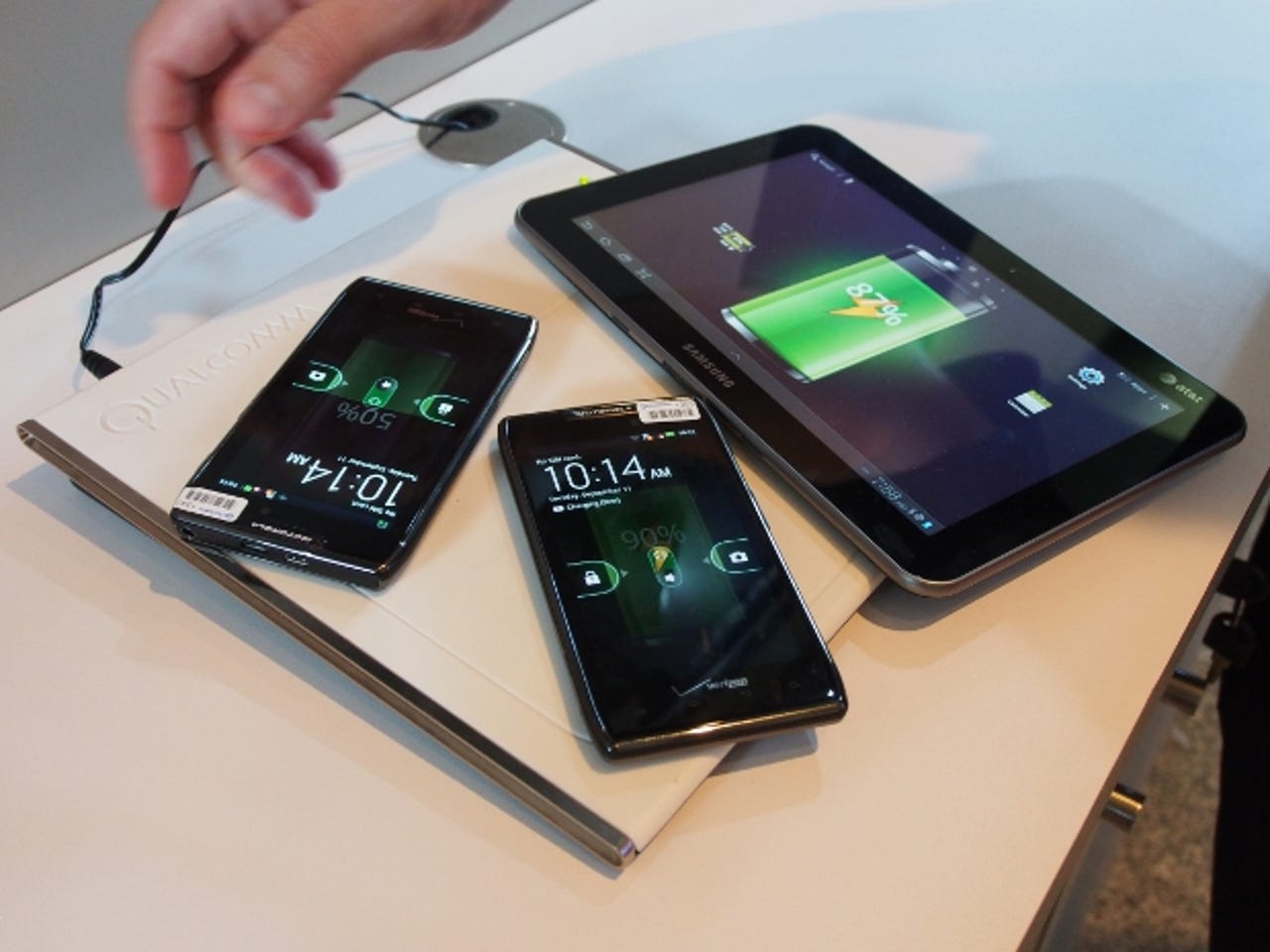Qualcomm shows off wireless chargers and augmented reality tech: Photos


Qualcomm WiPower
Although Qualcomm's most public face is that of the leading smartphone processor designer, the company has many other projects on the go.
At the Innovation Qualcomm 2012 event on Tuesday, the company showed off some of that work. One of the most immediately useful ideas is WiPower, an inductive wireless charging technology that can be used for juicing up multiple devices at once.
The WiPower system uses a Qualcomm-made module that resides inside the phone, rather than connecting directly with the back cover (as is the case with Nokia's latest Windows Phones and others that follow the Wireless Power Consortium's 'Qi' approach).
This avoids the problem of heating up other metallic objects, such as keys and coins, that get placed on the charging pad.
Apparently due for commercial release later this year, WiPower has been around eight years in the making. Qualcomm bought the eponymous company behind it in 2010, and founded an industry consortium — including players such as Samsung — to push its adoption.
Vuforia
Vuforia is an augmented reality platform that is, according to Qualcomm's Michael Gervautz, already used in around 1,500 mobile apps.
It uses an SDK provided by Qualcomm, is optimised to work particularly well on handsets using the company's chipsets, and has already been out for a year or so.
Vuforia's application has been almost entirely in marketing and advertising, allowing print ads and even magazine covers to trigger various interactive animations and videos.
Gervautz suggested Vuforia apps will work on around 80 percent of smartphones out there. For app developers, the SDK removes the need to have to deal with the peculiarities of various handsets and tablets' operating systems and cameras.
Qualcomm Hy-Fi
If you've ever found yourself fiddling around with various forms of connectivity such as Ethernet, Wi-Fi and Powerline to try find the best connection (I have), then Qualcomm hopes to remove such troubles through its Hy-Fi technology.
Hy-Fi is a plug-and-play device (the white plug-like thing you see above) running a software layer that effectively chooses the best connection at any given time and switches accordingly, without interrupting whatever was going on over that connection.
According to Qualcomm, it takes care of Wi-Fi channel management, AP settings and Powerline settings, with the user not having to do anything but pressing a button to secure the network.
There's no word on its release date, but Qualcomm representative Alauze Guy suggested it would be made available to consumers "soon" through one of the company's partners.
Qualcomm 2Net Hub
Mobile radios are increasingly finding their way into all sorts of devices, many of them used for healthcare.
Pictured here you will see a fertility monitoring device, glucose sensors, a wearable fitness device and an ECG monitor. Their manufacturers sometimes don't think too hard about the wireless data transmission element, so they are usually not standardised.
That's where Qualcomm steps in, with something called the 2Net Hub. It contains a stack of low-power radios, and effectively provides a single point of connectivity for all those devices.
Needless to say, that's not much use when the device is supposed to be generally carried around. It would help for monitoring people at home, though.
The 2Net Hub is already out in the US, and it is expected to hit Europe later this year.
Qualcomm femtocell
This is a reference design for one of Qualcomm's small cells, or femtocells.
They may be a fringe effort right now, but femtocells will be very important when it comes to LTE-Advanced, or proper 4G (LTE is allowed to be marketed as 4G, but it falls slightly short of conforming to the specification).
The reason for this is that LTE is, according to Qualcomm R&D's Prashanth Sharma, no more spectrally efficient at this stage than the latest iterations of HSPA. So the general industry plan for its successor is to complement standard macro cells with small cells, to increase efficiency.
The femtocells used these days tend to be very low-powered, to stop them from reaching far enough to interfere with the macro cells. Part of the LTE-Advanced idea is to reserve small parts of the LTE spectrum for the small cells — it takes resources away from the macro cells, but the resulting efficiency boost sees overall capacity increase significantly.
Sharma said operational trials had seen network capacity increase by 180 percent through optimised deployment, as opposed to the 40 percent boost gained by simply throwing a few small cells into the mix.